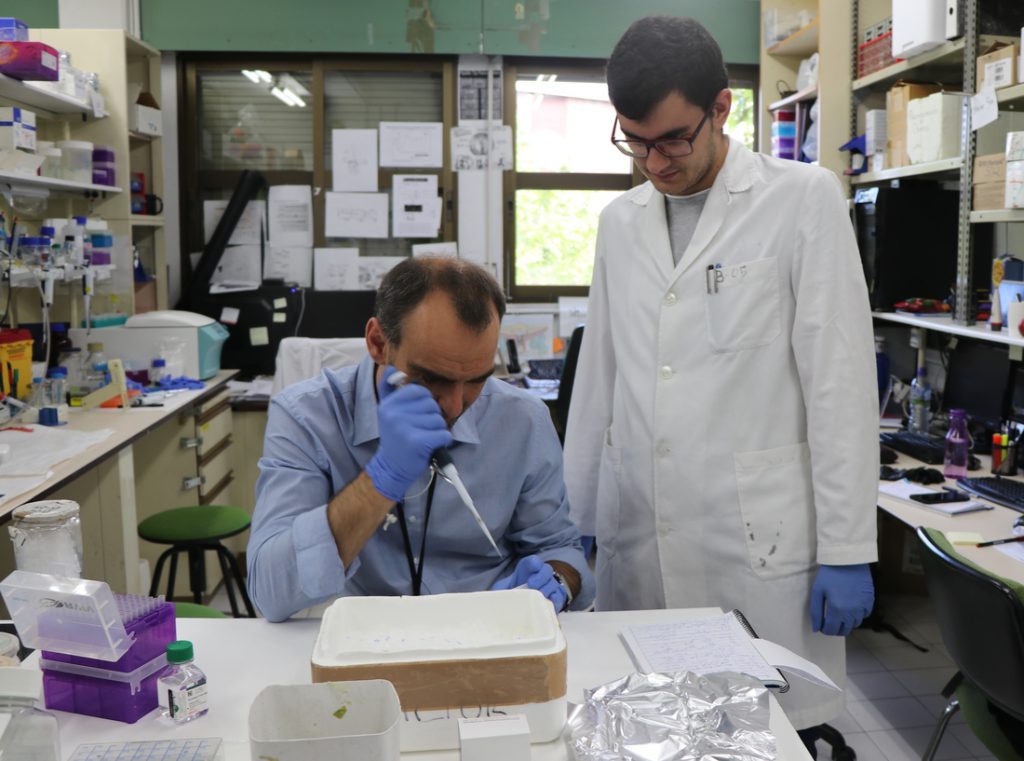By Valerie Nikolas
Medill Reports
A Japanese postdoctoral fellow, two Spanish doctoral candidates, an Italian undergraduate and an American journalist walk into a neuroscience research institute in Spain.
It’s 2 p.m. and the Cajal Institute’s break room is abuzz with the sounds of scientists eating packed lunches, discussing the latest episode of Game of Thrones and debating which country has the best coffee.
I’m at the Cajal Institute for a three-week embedded science reporting assignment, during which I will work closely with scientists here to learn about their research and communicate their findings. The Cajal Institute—the oldest neuroscience institute in Spain—was founded by Santiago Ramón y Cajal, the Nobel Prize-winning father of modern neuroscience.

I’m sitting with members of the neuroendocrinology unit: postdoctoral researchers Jaime Pignatelli and Kentaro Suda, doctoral candidates M. Estrella Fernández de Sevilla and Laura Martínez , and undergraduate students Miriam Caroppoli and Iván Mendez. They are taking a break from the demands of their experiments to eat, relax and socialize.
This lab’s work, led by Ignacio Torres Alemán, focuses on how hormones affect cognition. These researchers, along with chief scientist Ana Fernández, doctoral candidate Jonathan Zegarra, Fulbright scholar Jacob Sperber and research assistants Roberto Cañadas and Miguel García, study how hormones such as insulin-like growth factor-1 (IGF-1) affect neuroplasticity – the brain’s ability to form new neural connections throughout a person’s lifespan. Their research has implications for understanding neurodegenerative diseases such as Alzheimer’s.

The neuroendocrinology lab is one of the institute’s 27 laboratories, which investigate everything brain-related, from neuroanatomy to pharmacology. Most of the lab’s experiments are basic science research, primarily using brain cells from mice and rats, that help researchers understand broader questions about how the mind works.
The ultimate goal, according to Alemán, is to “develop models that lead to new pathways to developing drugs” that treat the diseases caused by disturbances in these cycles. As such, the neuroendocrinology lab partners with local hospitals to administer human studies.
By 3 p.m. everyone has returned to their work upstairs in the lab. The silence of concentration is interrupted only by the sounds of timers beeping for various experiments, or a question asked in either English or Spanish.
Pignatelli researches the interplay between IGF-1 and orexin, a neuropeptide that regulates arousal, wakefulness and appetite. With the help of undergraduate students Caroppoli and Mendez, he seeks to understand how this neuropeptide is affected by stress and other behavioral influences. Fulbright Scholar Jacob Sperber of New Jersey sometimes assists Pignatelli too. Sperber’s research focuses on the mechanisms driving food-seeking behavior.

Martínez and Fernández de Sevilla are both doctoral candidates (or “pre-doctoral,” as they are called in Spain). Martínez’s project aims to better understand how glucose is metabolized in the brain, while Fernández de Sevilla’s focuses on understanding brain cells’ receptors for orexin in the hypothalamus region of the brain.
Zegarra, also a doctoral candidate, has published findings on the relation between IGF-1 and neuropsychiatric disorders such as Alzheimer’s disease and on the decrease of interaction between IGF-1 and estradiol (a female sex hormone) in female mice during menopause.
Together, these researchers’ collaborative efforts contribute to the greater goal of understanding how hormones affect the brain, thus giving us greater insight into one of the greatest scientific questions of our time: how our own minds work.

